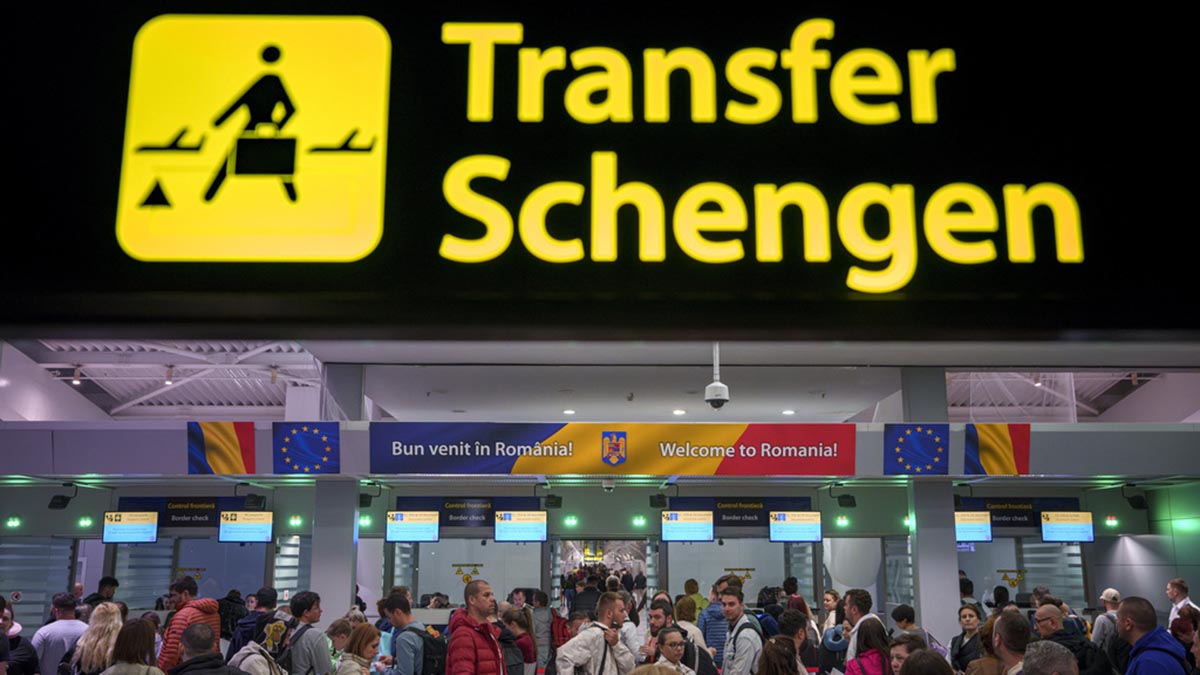Travelling to the European Union?
If you are an Indian or a non-EU traveller, things are set to get a little more complicated.
After many delays and false starts, the EU on Sunday finally launched its new digital Entry and Exit System (EES). This is a new automated and biometric system that will eventually replace the manual stamping of passports.
But what is EES? What do we know about it? How does it work? Let’s take a closer look.
What is it?
The EES will track the movement of non-EU citizens within the Schengen area . The Schengen Zone, established in 1985, comprises 29 members – 25 of the 27 European Union member states as well as Switzerland, Norway, Iceland and Liechtenstein. It is the world’s biggest area without internal border controls, where more than 400 million people can travel freely inside the zone.
Under this system, non-EU citizens will have to register by having their fingerprints and photograph taken while entering and leaving the zone. Their passport will also have to be scanned. It will apply only to those persons staying in the Schengen zone for a short while. It is not applicable to citizens of the EU. A non-EU traveller has been defined as someone who does not hold EU nationality or the nationality of Iceland, Liechtenstein, Norway or Switzerland. Citizens of the United States, Canada, Australia, and the United Kingdom will have to undergo the EES.
However, it will not be applicable to citizens of Ireland , Cyprus, those holding passports issued by the Vatican City or the Holy See, non-EU citizens travelling for research, study, voluntary services or au pair services.
How will it work?
Kiosks have already been set up in places such as airports, train or bus stations for people to self-register. The process is free, and there is no need to pre-register. Here, people will have to input their name, passport details, fingerprints, and the date and place of entry and exit. The machine will take a photograph of their face. Children under 12 will not have their fingerprints scanned.
The idea behind the system is to make border crossings more efficient. The European Council in July, announcing the EES system, said it is aimed at “improving the effectiveness and efficiency of controls at the EU’s external borders”.
The EU says the system will allow it to tamp down on criminals and illegal border crossings. “The EES will also help to significantly reduce identity fraud,” an official statement said. EU minister for immigration and integration, Rasmus Stoklund, was quoted as saying, “We must do everything we can to prevent terrorists and irregular migrants from entering the Schengen area illegally.”
“It is crucial that we maintain effective control over third-country nationals entering the Schengen Area, so that we can strengthen security at the external borders. With an EU-wide IT system, it will become easier to monitor who is crossing our borders,” he said.
The EES will also make sure that people are not overstaying on their visas. The EU has said anyone refusing to provide their fingerprints or have their picture taken will be refused entry to the bloc. However, it will not apply to people who are crossing from nation to nation within the Schengen zone. A person travelling from one Schengen nation to another will have their details compared to the information they have already given.
The system will be phased in over the next few months. Travellers will experience the system depending on when and where they are travelling. For travellers using the Port of Dover, Eurotunnel at Folkestone or Eurostar at St Pancras International in London, the process will take place at the border before they leave the UK. The system is expected to be fully in place by 10 April 2026.
What about the data?
The EES says it will hold on to the data collected for three years, after which it will be deleted. However, some exceptions may be made.
The EU says the data will be made available to border, visa and immigration authorities within the Schengen Zone. Local police and Europol, the EU agency for law enforcement, can also access the information. The EU says that data may be sent to another country, outside Schengen, or an international organisation, such as a United Nations body, under “strict conditions”. However, the EU has insisted that “travellers’ data will be collected and stored in full compliance with EU data protection rules and rights.”
While the EU has said the idea behind this is to speed up border crossings, the system is showing teething problems. The EU airports where the EES, including Prague, went into effect have witnessed long queues.
Meanwhile, the UK has begun introducing its own Electronic Travel Authorisation (ETA) system. This is a digital permission to travel for visitors who do not need a visa for short stays, or do not have another valid UK immigration status prior to travelling to the UK.
With inputs from agencies
)